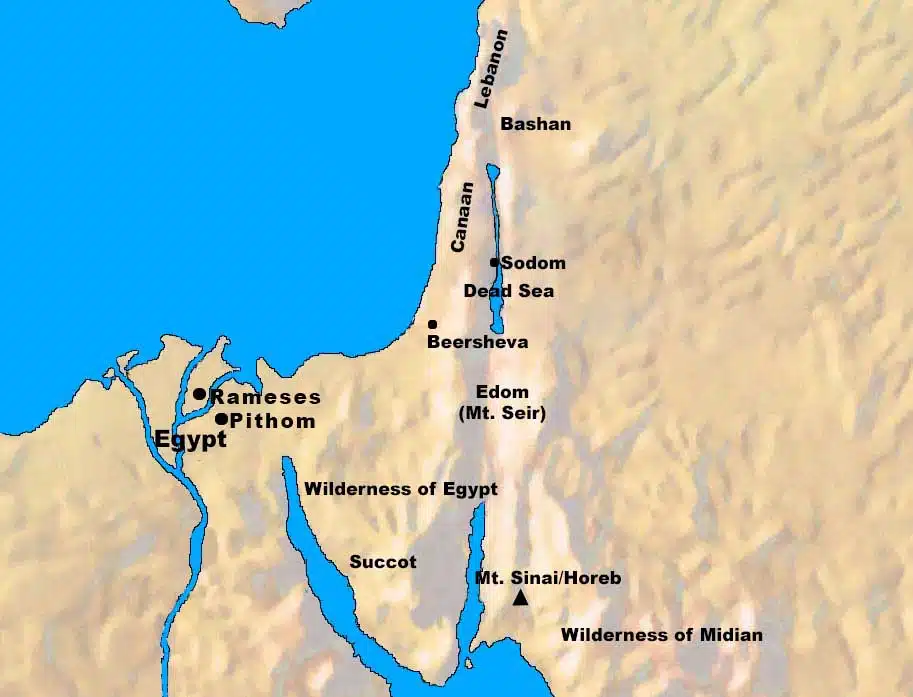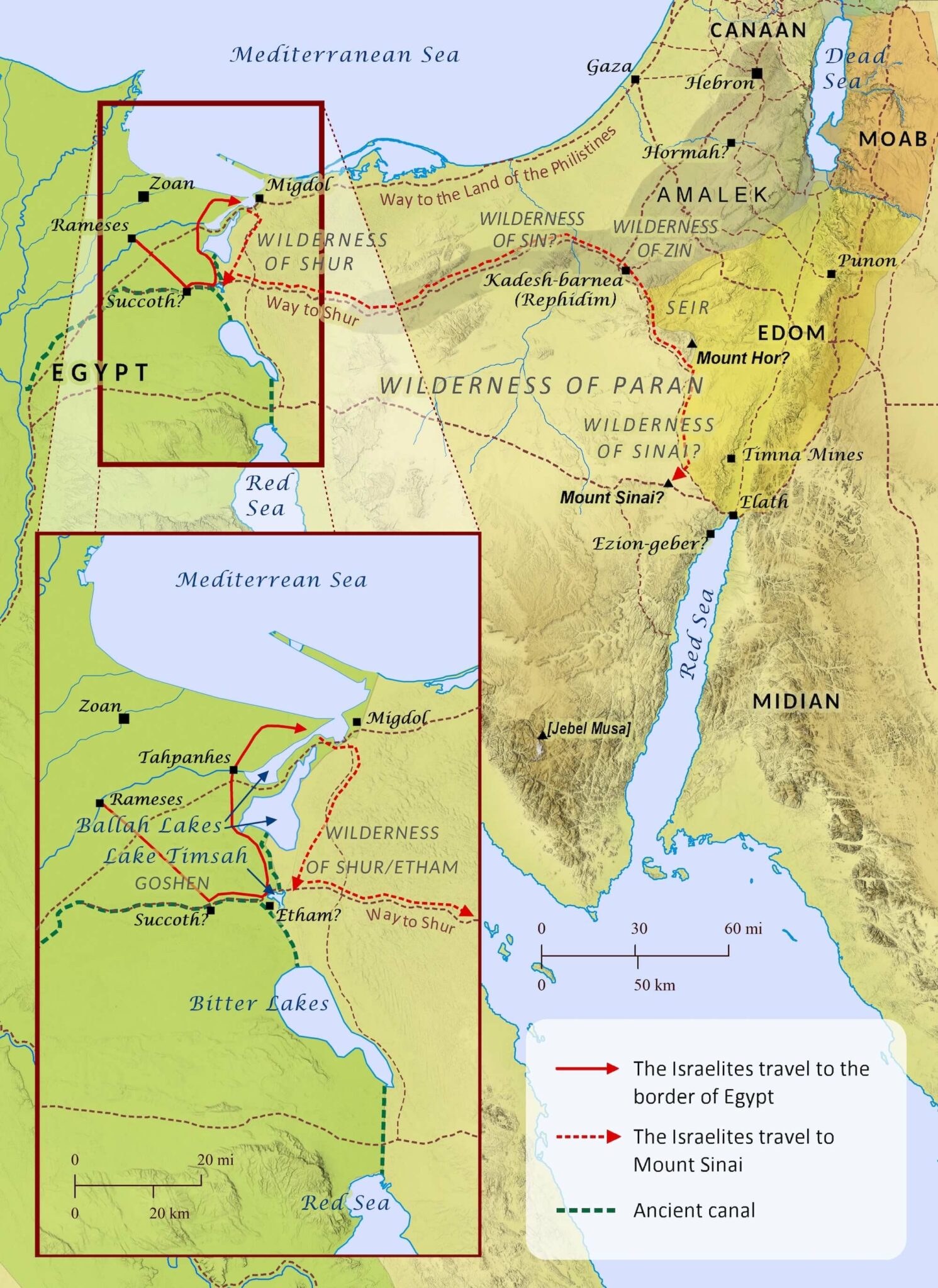The last section of chapter 16 (verses 31 – 36) describes how the LORD commanded Moses to keep a measure of the manna as an everlasting memorial to His constant provision for His people while they were in the wilderness. An omer of manna was to be placed in a jar and placed it in the LORD’s presence. The LORD faithfully provided the people with manna for forty years, until the time that they entered the Promised Land.
This section begins with a description of manna. In verse 31, the house of Israel named it manna. This is the first time in Scripture that the Israelites are called “the house of Israel.” This phrase is used frequently in the rest of Scripture, especially in the prophetic books, most often in Ezekiel. They called the LORD’s food provision “manna” which, as stated earlier, means “what is it.” Then, the manna is described as being like coriander seed, white, and its taste was like wafers with honey. “Coriander” is an herb whose seed is edible. It was “white” in color, and it tasted like honey wafers. So, it was a tasty, nutritious food that the LORD provided for His people.
Verses 32 – 34 describe another thing the Israelites were commanded to do. They were to keep an omer of manna as a visible means of remembrance to the LORD’s faithful provision for the needs of the people. It was not the idea of the people to do this, but it was what the Lord has commanded. What He commanded was to let an omerful of it be kept throughout your generations, that they may see the bread that I fed you in the wilderness, when I brought you out of the land of Egypt. That is, the omer of manna was to be visible reminder of the LORD’s faithfulness in providing for the people’s physical needs.
So, Moses said to Aaron, “Take a jar and put an omerful of manna in it, and place it before the Lord to be kept throughout your generations.” For Aaron to “place it before the LORD” is in line with him becoming the high priest and his family becoming the priests of Israel (Exodus 28:1). So, As the Lord commanded Moses, so Aaron placed it before the Testimony, to be kept. At the time of the beginning of the manna provision, there were not yet tablets of the Mosaic Law which were placed in the ark of the covenant in the Holy Place of the Tabernacle. Later in Exodus, the stone tablets are called the Testimony (Exodus 25:16).
It seems likely that verses 32 – 34 are mentioned here because they fit well in the context of the LORD’s provision of manna. It seems to be a logical rather than a chronological arrangement. This fits with the last two verses, that discuss manna in a non-chronological manner.
The final two verses in the chapter (35 – 36) summarize the full historical account of the provision of manna. The narrative jumps ahead and provides a complete timeline: The sons of Israel ate the manna forty years, until they came to an inhabited land. Joshua 5:12 states that the manna stopped when the Israelites reached Gilgal (Joshua 5:10), the first encampment after crossing the Jordan River. At that point, the people ate food that existed in the territory they were in. Thus, they ate the manna until they came to the border of the land of Canaan.
The last verse clarifies what an omer consisted of. It was a tenth of an ephah. An “ephah” was equal to about twenty quarts in today’s measurements, so an “omer” was about two quarts.
To sum up, the LORD graciously provided manna and quail in spite of the grumbling of the people. They were commanded to keep an omer of manna in the ark of the covenant as a perpetual reminder of the LORD’s gracious provision for their physical needs. This provision was to last forty years, until the Israelites entered the land of Canaan.
Jesus refers to the provision of manna in Exodus 16 to describe who He is. In John 6, which describes the feeding of the 5000, Jesus calls Himself the “true bread from heaven” (v. 32). Exodus 16:4 calls manna bread from heaven. It was life-giving sustenance miraculously provided by God. Jesus builds on this imagery, adding the qualifier “true” to “bread from heaven.” Manna was a picture of God’s provision of life. Jesus provides eternal life freely, without sowing or reaping. It must simply be received.
Biblical Text:
The house of Israel named it manna, and it was like coriander seed, white, and its taste was like wafers with honey. 32 Then Moses said, “This is what the Lord has commanded, ‘Let an omerful of it be kept throughout your generations, that they may see the bread that I fed you in the wilderness, when I brought you out of the land of Egypt.’” 33 Moses said to Aaron, “Take a jar and put an omerful of manna in it, and place it before the Lord to be kept throughout your generations.” 34 As the Lord commanded Moses, so Aaron placed it before the Testimony, to be kept.35 The sons of Israel ate the manna forty years, until they came to an inhabited land; they ate the manna until they came to the border of the land of Canaan. 36 (Now an omer is a tenth of an ephah.)
Check out our other commentaries:
-
Hebrews 13:1-6 meaning
The Pauline Author gives specific examples of how believers ought to be living in order to please God. ...... -
Deuteronomy 1:9-15 meaning
Moses recounts the story of Israel’s journey from Mount Horeb (Sinai). He had the people choose wise and respected men and appointed them as leaders...... -
Daniel 4:4-9 meaning
Nebuchadnezzar recounts his efforts to have his dreams interpreted....... -
Daniel 4:28-33 meaning
All that Daniel predicted would happen to Nebuchadnezzar is fulfilled....... -
Deuteronomy 11:22-25 meaning
Moses explains that if the Israelites love God and obey His commandments, they will successfully conquer the land of Canaan and will possess a vast......




